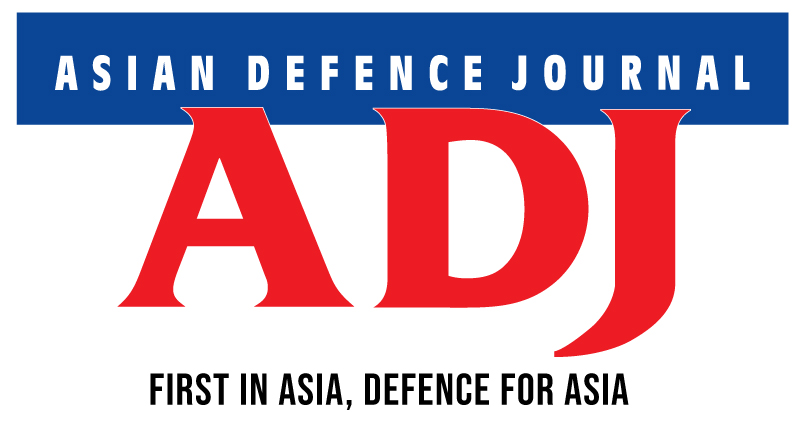Kelvin Kok, CEO, Kookree AI
As Artificial Intelligence (AI) makes sweeping progress across domains, Kookree AI CEO Kelvin Kok talks to Asian Defence Journal on the technology at IMDEX Asia 2025.
ADJ: As the line between ethics, national security and privacy continue to dominate discussions on AI, what is Kookree’s take on this tough issue?
KK: At Kookree, we see the intersection of ethics, national security, and privacy not as abstract concerns, but as real-world imperatives that directly shape how we build and deploy AI – especially in sensitive domains like maritime security. As a next-gen video analytics startup, we’re committed to responsible innovation that strengthens trust, sovereignty and operational safety. We design our AI to enhance human decision-making, not replace it – embedding ethical safeguards to prevent misuse, bias or unaccountable surveillance. We recognise the dual-use nature of video analytics and work with partners to ensure secure, compliant deployments that uphold national interests. Privacy is central to our approach: we adopt privacy-by-design principles, from data minimisation and edge processing to the use of synthetic and anonymised training data – enabling progress without compromising rights.
ADJ: What are some other ways AI can be utilised as a tool for ensuring maritime domain awareness (MDA) and maritime security?
KK: AI is rapidly reshaping the domain of maritime domain awareness and maritime security, offering unprecedented real-time visibility, predictive intelligence and mission agility. At Kookree, we believe that the convergence of AI-powered video analytics, intuitive no-code interfaces and natural language-driven search marks a transformative step in how maritime agencies monitor and secure their operational environments.
No-Code Video Analytics for Rapid, Field-Ready Intelligence
In the past, deploying sophisticated surveillance and anomaly detection systems demanded technical expertise and engineering support. Kookree’s no-code video analytics platform removes that barrier by enabling non-technical maritime operators to harness the power of AI-driven computer vision – quickly, independently, and at scale.
With just a few clicks, users can:
– Detect and classify abnormal vessel behavior, such as loitering near restricted zones or deviating from shipping lanes.
– Configure smart alerts for specific scenarios, like unauthorised docking or nighttime activity, using a visual interface.
– Update models on the fly to match shifting mission parameters – without any coding.
This empowers naval personnel and port authorities to deploy and adapt video analytics on the edge or at command centers, without reliance on data science teams – accelerating response times and operational flexibility.
Intelligent Video Search Through Natural Language Processing (NLP)
Maritime operations generate terabytes of video from drones, coastal cameras and ship-mounted sensors – most of which go unreviewed due to sheer volume. Kookree’s NLP-based video deep search transforms this challenge into opportunity by enabling users to query video like a search engine, with natural language.
Examples include:
– “Show all vessels entering restricted Zone 3 between 2am and 5am last week.”
– “Find footage of personnel disembarking without ID or uniform.”
– “Search for orange lifeboats deployed during high sea states in the past 24 hours.”
This capability turns passive video data into actionable operational intelligence, significantly reducing time to insight while enhancing decision-making in critical maritime missions.
ADJ: What are Kookree’s plans toward applying AI towards areas such as maritime search and rescue (SAR) or even humanitarian assistance and disaster relief (HADR)?
KK: Kookree is deeply committed to applying AI where it matters most – in saving lives and protecting communities. Maritime SAR and HADR missions operate in high-stakes, time-critical environments where speed, accuracy and adaptability are non-negotiable. Our AI video analytics platform is being purpose-built to deliver exactly that.
Multi-Modal Deployment: Edge, On-Premise, Cloud
We understand that in maritime SAR and HADR contexts, connectivity is often limited, and conditions vary dramatically from coastal command centers to open-ocean operations. That’s why Kookree supports:
– Edge deployment on drones, vessels, and buoys, allowing real-time video inference and detection without internet connectivity.
– On-premise servers at naval bases or disaster command hubs for mission-specific customisation, control, and security.
– Cloud-based analysis for broader coordination, post-mission insights, and integration with national or international response systems.
This flexible deployment architecture ensures that our solutions are operational whether you’re in a command center or in the field – no connectivity bottlenecks, no compromise on performance.
Key Approach: AI-Powered Speed, Accuracy, Contextual Intelligence
In life-saving scenarios, every second counts. Kookree’s AI enables:
– Rapid video search and object/person detection across vast data streams – from UAVs, coastal cams, to satellite downlinks.
– Identification of life rafts, human silhouettes, distress gestures and color-coded flags — even in low-visibility or turbulent conditions.
– Context-aware prioritisation, highlighting footage or detections that match mission-critical parameters (e.g., solo survivors, capsized boats, crowding in refugee vessels).
This transforms response from reactive to proactive – enhancing situational awareness, reducing search fatigue and significantly shortening the rescue window.
Speed of Deployment, Cost-Effectiveness
Kookree’s no-code AI interface ensures rapid mission setup – video analytics models can be adapted to new scenarios or environments in minutes, not weeks. Our modular system is:
– Hardware-agnostic – compatible with standard IP cameras, drones and naval sensors.
– Lightweight and scalable – minimising compute cost and energy consumption at the edge.
– Subscription-based or pay-per-use, enabling cost-efficient adoption by agencies with budgetary constraints.


